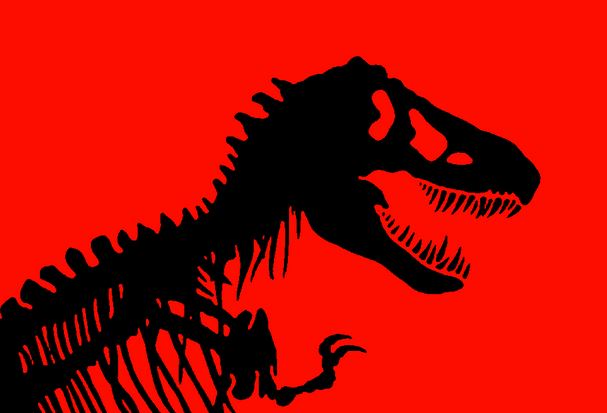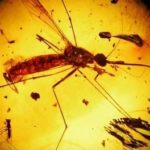
by Robert Arakaki
In the movie Jurassic Park is an unforgettable scene where a group of humans see living breathing dinosaurs towering over them, munching on leaves on the tree tops. The dinosaurs were the product of careful biological engineering. Scientists extracted DNA from dinosaur fossils, reconstructed the original DNA strand, inserted the reconstructed DNA into egg embryos, and then hatched the eggs.
Michael Crichton’s Jurassic Park is an apt metaphor of the recent quest among Protestant for the ancient Church. Examples of this yearning include: Robert Webber’s ancient-future faith network, Peter Leithart’s Reformational catholicism, and the convergence church movement. These recent movements have earlier precedents in the 1800s, e.g.,Mercersburg Theology and the Oxford Movement. The Protestant quest for the ancient Church is similar to the paleontologists’ fascination with the lost past of dinosaurs.
Having broken away from the corruptions of Roman Catholicism, Protestants asserted they were now in a position to return to the purity and simplicity of ancient Christianity.
The desire to reconnect with the past is a natural one. It is like an adopted child wanting to learn about his or her birth parents. This interest in antiquity is also biblical. The prophet Jeremiah wrote about seeking after the good way, the ancient paths (Jeremiah 6:16). The book of Proverbs talked about respecting the “ancient boundary stone” put in place by the forefathers (Proverbs 22:28).
Reconstructing the Past
 The novel Jurassic Park can be seen as a metaphor of the flaws within Protestant ecclesiology. If one pays close attention to the story line of Jurassic Park one becomes aware that the dinosaurs are not real dinosaurs in the sense of being identical to those that existed in the Mesozoic era. The dinosaurs of Jurassic Park were laboratory creations, the product of careful scientific research. In the same way there is a certain artificiality in the Protestant quest for the early Church. Where the scientists in the laboratories of Jurassic Park worked from DNA extracted from dinosaur fossils, Nevin and Schaff worked in seminary libraries seeking to excavate ancient church texts. More recently, Webber and Leithart used the same methods attempting to renew the church by selectively drawing on the church fathers and early liturgies.
The novel Jurassic Park can be seen as a metaphor of the flaws within Protestant ecclesiology. If one pays close attention to the story line of Jurassic Park one becomes aware that the dinosaurs are not real dinosaurs in the sense of being identical to those that existed in the Mesozoic era. The dinosaurs of Jurassic Park were laboratory creations, the product of careful scientific research. In the same way there is a certain artificiality in the Protestant quest for the early Church. Where the scientists in the laboratories of Jurassic Park worked from DNA extracted from dinosaur fossils, Nevin and Schaff worked in seminary libraries seeking to excavate ancient church texts. More recently, Webber and Leithart used the same methods attempting to renew the church by selectively drawing on the church fathers and early liturgies.
Within Jurassic Park are nuggets of fascinating philosophical questions. One fundamental problem was that the dinosaurs of Jurassic Park were artificial creatures. They are artificial because of modifications made to their bodies. This gave rise to all sorts of problems and made them inherently unstable.
“You don’t know for sure?” Malcolm said, affecting astonishment.
Wu smiled, “I stopped counting,” he said, “after the first dozen. And you have to realize that sometimes we think we have an animal correctly made—from the standpoint of the DNA, which is our basic work—and the animal grows for six months and then something untoward happens. And we realize there is some error. A releaser gene isn’t operating. A hormone not being released. Or some other problem in the developmental sequence. So we have to go back to the drawing board with that animal so to speak.” (Jurassic Park p. 111)
One example of genetic modifications built into the recent ancient-future and reformational-catholic churches is the absence of the episcopacy. This is no mistake. To adopt an episcopal structure would mean surrendering congregational autonomy so precious to so much of Evangelicalism. In this sense they are still genetically Protestant. Their clinging to Protestant church structures fundamentally separates them from the early Church founded by the Apostles. The bishop was integral and fundamental to the early Church. Ignatius of Antioch, a student of John the Apostle and the third bishop of Antioch, stressed the importance of obeying the bishop (see Letter to the Smyrneans VIII, IX).
Where the bishop is present, there let the congregation gather, just as where Jesus Christ is, there is the Catholic Church. Without the bishop’s supervision, no baptisms or love feasts are permitted.
Yet the libertarian strand in Protestant theology will not allow for bishops in the historic sense. Many Protestants by reading only the Bible and ignoring the early church fathers end up projecting their Protestant bias onto church history. But such an omission would be like a historian writing a book about ancient Rome with no mention of the Caesars! Or a law professor teaching a course on American jurisprudence with hardly a mention of the Supreme Court.
Another quandary in the Protestant quest for the early Church is whether one could actually bring it back or just end up with a caricature. A similar quandary existed for the scientists in Jurassic Park who had never seen a living dinosaur from the Mesozoic era.
Grant said, “How do you know if it’s developing correctly? No one has ever seen these animals before.”
Wu smiled. “I have often thought about that. I suppose it is a bit of a paradox. Eventually, I hope, paleontologists such as yourself will compare our animals with the fossil record to verify the developmental sequence.” (Jurassic Park p. 114).
The paradox here is whether these reconstructed dinosaurs were really dinosaurs or something else. All that the scientists had to go by were fossils, not actual living dinosaurs from the Mesozoic era. Similarly, for Protestants all they had to go by were ancient patristic texts but no living church tradition that goes back to the early Church. This leaves them guessing as to what the early Church must have been like.
Similarly, there is a tension between people who have little patience for the deep questions and just want to get things done.
Hammond sighed. “Now, Henry, are we going to have another one of those abstract discussions? You know I like to keep it simple. The dinosaurs we have now are real and—“
“Well, not exactly,” Wu said. He paced the living room, pointed to the monitors. “I don’t think we should kid ourselves. We haven’t re-created the past here. The past is gone. It can never be re-created. What we’ve done is reconstruct the past—or at least a version of the past.” (Jurassic Parkpp. 121-122)
Lacking a living tradition that goes back to the Apostolic Church, Protestants end up having to reconstruct the early Church as they best understood it to have been. The Jesus Movement of the 1970s had house churches where people sat on the floor, played guitars and sang praise songs, and everyone with a Bible in their hands.
More recently, Evangelicals have discovered the writings of the early church fathers and are seeking to incorporate these discoveries into their congregations: reciting the Nicene Creed, celebrating the Eucharist weekly, vestments for the clergy, candles and incense. Not being part of a living tradition they end up creating a “version of the past” trusting God to bless their sincere efforts to return to the early Church. It is like lost travelers seeking to find their way home without knowing where home is on the map.
